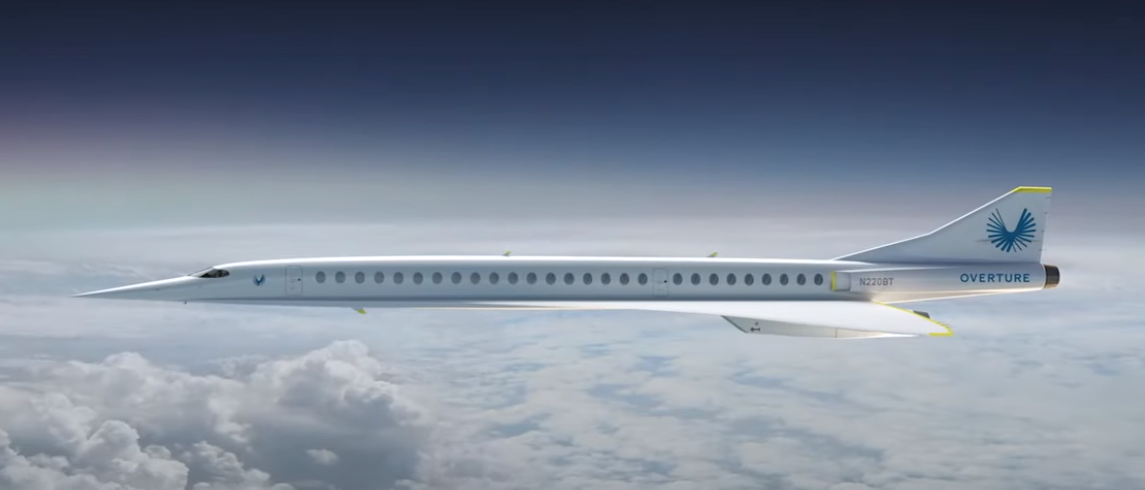
LOS ANGELES—Boom Supersonic is readying the XB-1 demonstrator for ground tests at its Centennial Airport, Colorado, headquarters following a virtual rollout event on Oct 7.
The 71-ft.-long, delta wing XB-1 trijet is designed to pave the way for Boom’s follow-on Mach 2.2 Overture airliner. The demonstrator is expected to make its first flight from Mojave, California, sometime in the third quarter of 2021 and could exceed Mach 1 by the end of next year.
Over the coming weeks the XB-1 will be put through an initial battery of 36 major ground tests ranging from hydraulic system checks and engine runs to failure modes and ground vibration tests.
“We’ll do taxi tests here in Colorado and then we take the vertical tail off, put it on a truck and take it down to Mojave. Then we put the throttle forward and go fly and that’ll probably be later next year,” Boom founder and CEO Blake Scholl says.
Flight tests will chiefly evaluate the aerodynamic performance of the XB-1’s ogive delta wing and engine inlet. Test results will inform the final configuration of the Overture, which is due to be frozen in late 2021. The airliner program will be officially launched in 2022, coinciding with groundbreaking for the as-yet-unnamed production site.
“In 2023 we’ll start building the first parts and tools and then the rollout of Overture is in 2025. First flight and the start of the flight test program is 2026,” Scholl says.
“Then the question becomes, how long does flight test and certification take? The A350 did it in 18 months. I suspect that would be pretty sporty for us given the airplane and that we’re in the post-737MAX era,” he adds. At the rollout entry-into-service was given as 2029. “Our commitment is to carry passengers by the end of the decade–and there’s some margin in there. Not everything has to go perfectly to hit those milestones.”
Boom also aims to reduce its list of 15 potential assembly sites to around five finalists by year’s end. “If you look at the schedule, we’d better know where we’re going to be by the middle of next year,” Scholl says. He added that the final arrangement could include an option for an inland final assembly facility and a coastal site for supersonic flight test and delivery.
Engine development will be the key pacing for the program, which officially selected Rolls-Royce as the propulsion partner in August.
“A few months ago, Rolls had three different engine concepts for the aircraft and by November we’ll be down selecting to one,” Scholl says. “We think we know what the winner is already, actually, but we’re kind of dotting the i’s and crossing the t’s and make making sure that we’ve got that right.”
Few specifics are known, but Scholl says all the options are mid-thrust derivatives of existing cores.
“The options are a completely off-the-shelf core, an upgraded core or a photo-scaled core,” he adds.
All will be adapted with a new low-pressure system, a distortion tolerant fan and exhaust.
